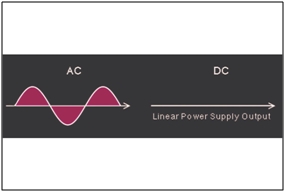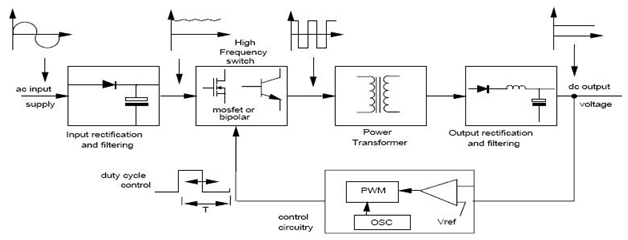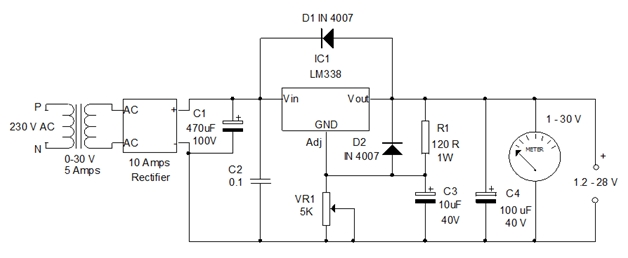Home › Electrical Engineering Forum › General Discussion › Choosing the right power supply
- This topic has 2 replies, 2 voices, and was last updated 10 years, 5 months ago by
Anonymous.
-
AuthorPosts
-
2013/11/08 at 4:25 pm #11103
Steven Mill
ParticipantFrom the domestic user point of view, choosing an appropriate power supply is important. It is your insurance strategy against power surges and also prolongs the equipment of the device attached to. This post would illustrate on the types and draw a comparative analysis, helping you to make a reasonable choice.
The regulated power supply indicates to a power supply that can supply variable output voltages that are helpful for testing circuits. Nearly all devices that we use in circuits require a dc source.
The basic construct of the power supply involves a power supply and a voltage regulating device. The significant types of power supplies have been discussed below:
SMPs
Switch Mode Power Supply is a classical model which heralds the line of diminutive, light and productive electronics available in the market.
This supply uses a switching regulator that serves the function of converting electrical power efficiently. Another important aspect of SMPs is their economical designs. By using high frequencies, the size of the power transformer as well as the filtering components is greatly reduced. Converts in the DC to DC and DC to AC fall in the category of SMPs.
Circuit Design
One important benefit of SMPs is their lesser power loss. In the traditional linear regulatory circuits the extra voltage which comes from the unregulated DC supply drops. In the case of SMP, the unregulated voltage portion is catered to by the switch duty ratio.
The main design of the SMPs is based on a DC-DC converter. Important consideration is that the SMPs with a DC input do not need a rectification stage. Modern designs have a power factor correction circuit, improving its efficiency. The unregulated DC supply is shunted to the high frequency switch.
The SMPs operate using a fixed frequency pulse width modulation mechanism. In this case, the regulation is done on a cycle-cycle basis. There is a voltage feedback being mediated by an oscillator. The technical term for this regulator is the opto-isolator.
The block diagram provided below would shed better light on the design.
Advantages
- The main advantage is its greater efficiency. The switching transistor plays an important role since it also less power to dissipate.
- Less heat generation which occurs due to the improved efficiency already highlighted above.
- The setup is smaller in size, thus providing better utility.
- Reduced harmonic feedback to the supply main helps to lessen the electrical load.
Range of Applications
For best possible usage of SMPs, the appliances should be personal computers, security systems and machine tools.
LM338 and variable power supply
With the DC aspect being catered to, there are many appliances that require varied output voltage. In the case of variable power supply, we can adjust the output as per our needs. Its range of application mostly deals in testing electronic projects.
The main design involves a regulator and a variable resistor. The resistor allows adjusting the output. A common example of a regulator is the LM317 which provides a range from 1.25 to 30V. A better option is the LM338 IC.
The LM338 is a high current voltage regulator. It can add 5A current to the load. The benefit of its design is that only 2 external resistors are needed to set the output voltage. It comes in a 3 terminal package, and the design is a variant of LM 138.
Circuit Design
The circuit design has a step down transformer, rectifier module, smoothing electrolyte capacitor, LM338 and a variable resistor. The capacitor is used to filter the DC signals and remove the AC ripples that can affect the circuit.
The basic design of the circuit can be better understood from the illustration provided below:
(Image courtesy Creative Commons)The power in the circuit comes from the 5A step down transformer. The rectifier (10A) rectifies the low volt AC to DC. The smoothing capacitor C1 removes ripples from the supply. The Capacitors C2 and C3 shown in the diagram help to improve the transient responses. The output voltage can be adjusted using the Pot VR1 as per the need. The D1 plays the role of protection against C4, while D2 protects against C3.
Advantages
- Efficient for variable supplies
- Beneficial for testing high power amplifier circuits
- Good tool for trouble shooting and servicing
- Can be used in high transient loads
- The overload protection would remain functional even when the adjust pin comes off
Conclusion
With the increase in energy efficient devices in the future; the demand for power supplies that could provide clean & pure energy will definitely increase. Switch mode power supplies could turn out to be the best solution for non linear loads.
Furthermore, these power supplies have the tendency to absorb power fluctuations to a greater extent henceforth protecting the sensitive equipment at the consume end. There is however a small downside in using Switch mode power supplies; i.e. they radiate electromagnetic interference.
Though with the numerous advantages these power supplies have this trade off could be easily compensated with effective design.2014/08/30 at 3:30 pm #13542Anonymous
GuestCurrently it appears like Expression Engine is the best blogging platform out there right now.
(from what I’ve read) Is that what you are using on your blog?Stop by my web page: plumbing supplies columbus ohio
2014/09/02 at 11:52 am #13546Anonymous
GuestHello i am kavin, its my first time to commenting anyplace, when i read this piece
of writing i thought i could also make comment due to this good article.Look into my web blog; plumbing showroom Waco Texas
-
AuthorPosts
- You must be logged in to reply to this topic.


